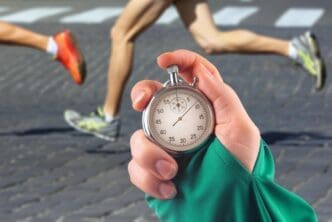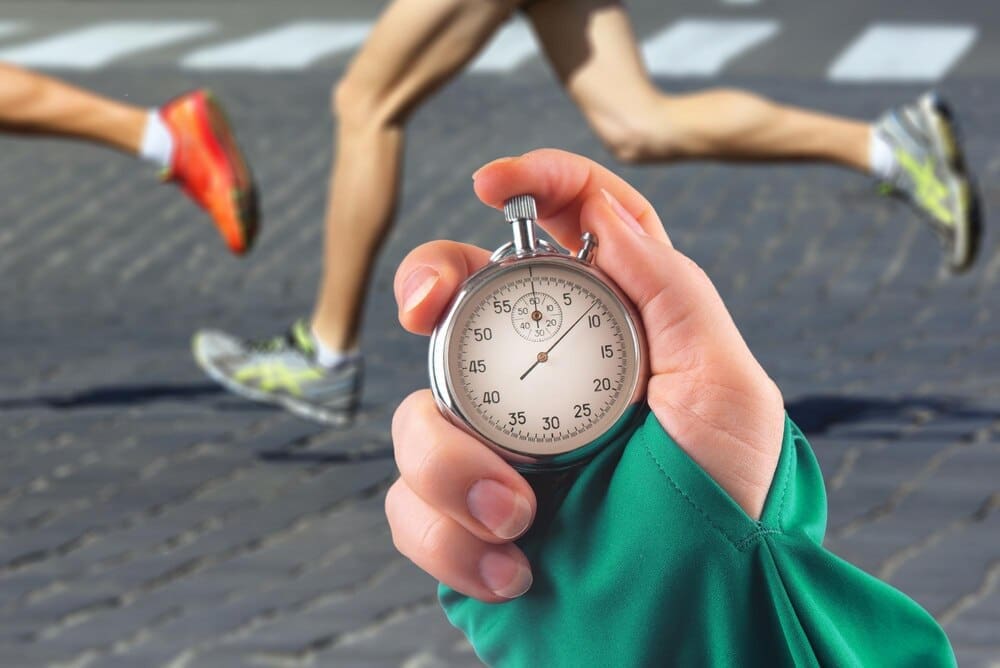For runners of all abilities, from those tackling their first 5K to seasoned marathoners, mastering pacing is the single most effective strategy for achieving a faster race time. Pacing is the deliberate management of your energy and speed throughout a race, a crucial skill that prevents the dreaded mid-race “bonk” or “hitting the wall.” By executing a smart pacing plan, runners can optimize their physiological performance, conserve vital energy for a strong finish, and ultimately cross the finish line faster and with a greater sense of accomplishment than if they had started out at an unsustainable speed.
The Science of Pacing: Why It’s More Than Just Running Fast
Understanding why pacing works requires a brief look under the hood at how our bodies produce energy during exercise. A well-paced race is a masterclass in energy management, balancing your fuel sources to last the entire distance.
Energy Systems 101: Aerobic vs. Anaerobic
Your body has two primary ways of generating energy for running: aerobic and anaerobic. Aerobic metabolism uses oxygen to efficiently convert carbohydrates and fats into a steady supply of energy. This is your long-distance, sustainable engine, perfect for most of a race.
Anaerobic metabolism, on the other hand, kicks in during high-intensity efforts when your demand for energy outstrips your oxygen supply. It provides quick, powerful bursts of energy but comes at a cost: it rapidly depletes your limited carbohydrate stores (glycogen) and produces metabolic byproducts, like lactate and hydrogen ions, faster than your body can clear them. This accumulation is what causes that familiar leg-burning sensation and forces you to slow down.
Starting a race too fast throws you into an anaerobic state prematurely. You burn through your precious glycogen fuel far too quickly, setting yourself up for a significant slowdown later in the race. Smart pacing keeps you in the efficient aerobic zone for as long as possible, preserving your anaerobic capacity for the final push to the finish line.
The Lactate Threshold: Your Pacing Sweet Spot
Central to this energy balance is a concept called the lactate threshold (LT). This is the intensity level at which lactate begins to accumulate in your bloodstream faster than it can be removed. For most runners, this corresponds to a pace they can sustain for about 60 minutes.
Running at or slightly below your lactate threshold is a physiological sweet spot. It represents the fastest pace you can maintain aerobically without “going into the red.” Pacing a half marathon or marathon effectively involves running at an intensity just below this threshold, while shorter races like a 10K might be run right at it. Knowing and training to improve your LT is a cornerstone of becoming a faster, more resilient runner.
Decoding Pacing Strategies: Which Is Right for You?
There are three primary pacing strategies runners employ on race day, each with its own set of pros and cons. The one you choose can dramatically impact your performance and overall race experience.
The Even Split: Consistency is Key
An even split strategy involves running each mile or kilometer of the race at a consistent, predetermined pace. For example, in a 10K with a goal time of 50 minutes, an even-split runner would aim to run every kilometer in exactly five minutes.
This approach is highly effective because it is the most energy-efficient way to cover a distance. It requires significant discipline, especially in the early stages when you feel fresh and full of adrenaline. It is best suited for experienced runners who have a very strong sense of their fitness and are competing on a flat, predictable course.
The Negative Split: Finishing Strong
The negative split is widely considered the gold standard for racing. This strategy involves running the second half of the race slightly faster than the first half. It’s how most world records are set and is an intelligent approach for runners at all levels.
By starting out conservatively, you conserve glycogen and mental energy. This allows you to maintain or even increase your pace in the latter stages of the race while others around you are fading. The psychological boost of passing other runners in the final miles is immense and can help you push through discomfort to a new personal best.
The Positive Split: The Common Pitfall
A positive split, starting fast and progressively slowing down, is the most common pacing mistake. Fueled by race-day adrenaline and the excitement of the crowd, countless runners charge out of the starting gate far too quickly, only to pay the price later.
This “fly and die” approach is physiologically inefficient. As discussed, it burns through your limited fuel stores too early and leads to a painful slowdown. While it might feel good for the first few miles, the resulting fatigue almost always leads to a slower overall time than if you had started more conservatively.
How to Find Your Perfect Race Pace
Determining your goal race pace isn’t guesswork. It’s a calculated estimate based on your current fitness. Using objective measures will give you a realistic target and the confidence to stick to it.
Using Tune-Up Races
One of the best ways to predict your performance is to run a shorter “tune-up” race three to four weeks before your main event. Your result from a 5K can be a strong predictor of your 10K potential, and a 10K or half marathon can help you set a realistic marathon goal.
This not only tests your fitness but also provides invaluable practice for your race-day routine, from your pre-race meal to your warm-up. It helps dial in the logistics so you can focus purely on performance during your goal race.
Leveraging Pace Calculators
Numerous online tools, many based on the work of renowned coaches like Jack Daniels and his VDOT formula, can help you determine equivalent race paces. By inputting a recent race time, these calculators can provide target paces for various distances and even suggest training paces for different types of workouts.
These calculators provide a fantastic starting point. They give you an objective, data-driven goal to structure your training around, removing the emotion and wishful thinking that can often lead to unrealistic expectations.
The “Talk Test” and Perceived Exertion
Beyond the numbers, learning to run by feel is a critical skill. The Rate of Perceived Exertion (RPE) is a scale of 1 to 10 that helps you quantify how hard you’re working. For a marathon, you might aim for an RPE of 6-7, feeling “comfortably hard.”
The “talk test” is a practical application of this. During an easy run, you should be able to hold a full conversation. For a marathon pace, you should be able to speak in short, clipped sentences. If you can only manage one-word answers, you’re likely running too fast for your goal distance.
Mastering Pacing in Training: Practice Makes Perfect
Race day is not the time to try out your pacing strategy for the first time. Your training runs are the laboratory where you experiment, practice, and perfect the art of pacing.
Goal Pace Workouts
Incorporate workouts specifically designed to teach your body and mind what your goal race pace feels like. Tempo runs, which are sustained efforts at your lactate threshold pace, are excellent for building endurance. Long runs should also include segments run at your goal marathon or half marathon pace to simulate race-day fatigue.
Intervals, like Yasso 800s for marathoners, are another great tool. These workouts involve running shorter, faster repeats with recovery jogs in between, helping to improve your speed and running economy, which makes your goal pace feel easier.
Learning to “Feel” the Pace
While GPS watches are incredible tools, it’s important not to become completely reliant on them. Practice running by feel. Try a workout where you cover your watch and try to hit a specific pace based on your internal sense of effort. Check your splits afterward to see how close you were. This builds an internal metronome that is invaluable on race day, especially if GPS signals are unreliable.
Race Day Execution: Putting It All Together
All your training and planning culminate on race day. Executing your plan requires discipline, adaptability, and trust in your preparation.
The First Mile: The Hardest to Pace
The first mile is where most pacing plans fall apart. Adrenaline is surging, the crowd is cheering, and everyone is jockeying for position. It is incredibly easy to get swept up and run 30-60 seconds per mile faster than you intended.
Your primary job in the first mile is to hold back. Consciously run slower than feels natural. Let people pass you. Trust that you will catch them later. Nail your pace in the first mile, and you set yourself up for success for the rest of the race.
Mid-Race Adjustments: Listening to Your Body and the Course
No race plan survives contact with reality perfectly. You must be prepared to adjust. If you encounter an unexpected hill, shorten your stride and focus on maintaining consistent effort, not consistent pace. Your pace will naturally slow going uphill and quicken on the downhill. Don’t fight it.
Pay attention to the weather and how you feel. If it’s hotter or more humid than anticipated, you may need to adjust your goal pace slightly to avoid overheating. If you feel unexpectedly good, wait until after the halfway point before deciding to pick up the pace.
Conclusion: Pacing as a Skill for Life
Ultimately, pacing is much more than a race-day tactic; it is a fundamental running skill developed through consistent, intelligent training and self-awareness. It transforms running from a brute-force effort into a strategic endeavor. By learning to listen to your body, trusting your training, and executing a disciplined plan, you not only unlock the potential for faster times but also cultivate a deeper, more rewarding relationship with the sport.














